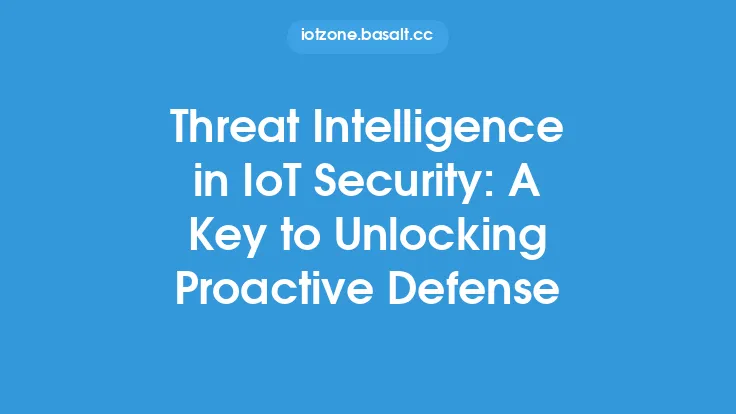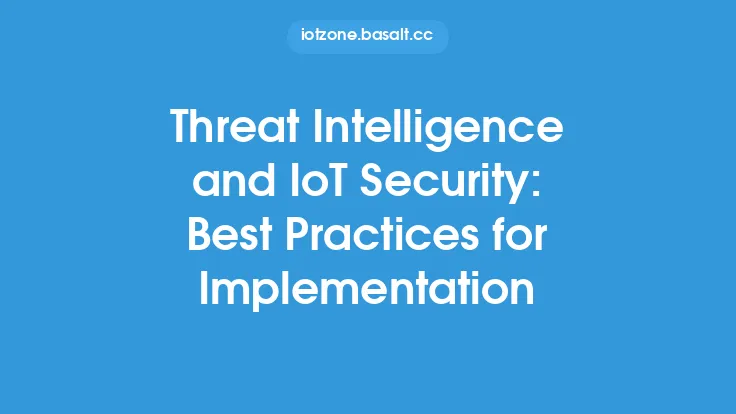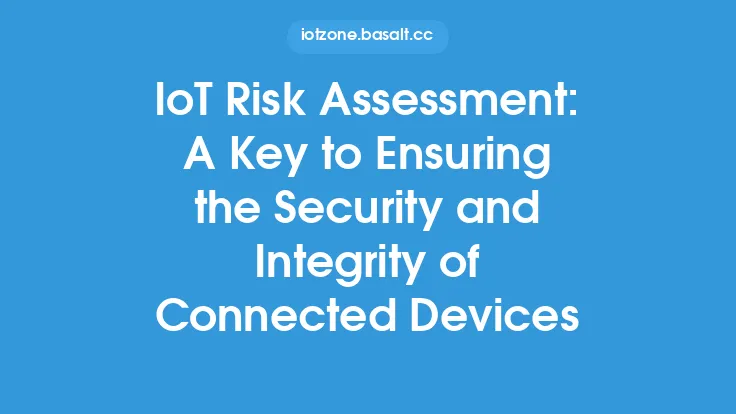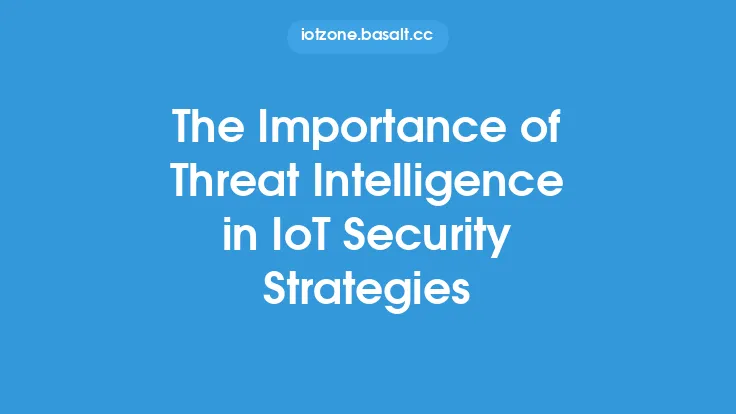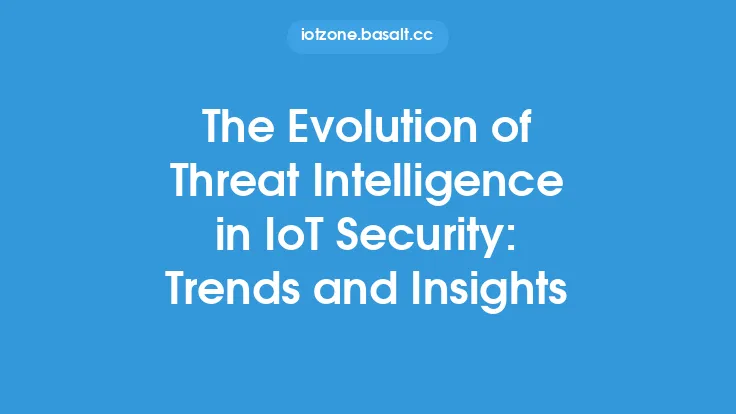The increasing number of Internet of Things (IoT) devices has created a vast attack surface, making it challenging for organizations to secure their networks and devices. As the IoT landscape continues to evolve, it's essential to adopt a proactive approach to security, and threat intelligence plays a critical role in this endeavor. Threat intelligence for IoT involves collecting, analyzing, and disseminating information about potential or existing threats to IoT devices, networks, and systems. This information is used to inform security decisions, prevent attacks, and minimize the impact of a breach.
What is Threat Intelligence for IoT?
Threat intelligence for IoT is a subset of threat intelligence that focuses specifically on the unique challenges and vulnerabilities of IoT devices and networks. It involves gathering and analyzing data from various sources, including IoT devices, networks, and systems, as well as open-source intelligence, social media, and dark web sources. This data is then used to identify potential threats, vulnerabilities, and attack vectors, and to develop strategies for mitigating or preventing these threats.
Benefits of Threat Intelligence for IoT
The benefits of threat intelligence for IoT are numerous. By adopting a proactive approach to security, organizations can reduce the risk of a breach, minimize the impact of an attack, and improve their overall security posture. Threat intelligence for IoT can also help organizations to identify and prioritize vulnerabilities, develop targeted security controls, and improve incident response. Additionally, threat intelligence can provide organizations with a competitive advantage, enabling them to stay ahead of emerging threats and vulnerabilities.
Types of Threat Intelligence for IoT
There are several types of threat intelligence for IoT, including strategic, tactical, and operational intelligence. Strategic intelligence provides high-level information about the threat landscape, including trends, patterns, and predictions. Tactical intelligence provides more detailed information about specific threats, including tactics, techniques, and procedures (TTPs) used by attackers. Operational intelligence provides real-time information about ongoing attacks, including indicators of compromise (IOCs) and indicators of attack (IOAs).
Sources of Threat Intelligence for IoT
Threat intelligence for IoT can be gathered from a variety of sources, including IoT devices, networks, and systems, as well as open-source intelligence, social media, and dark web sources. IoT devices and networks can provide valuable information about potential threats, including logs, alerts, and other telemetry data. Open-source intelligence can provide information about emerging threats, vulnerabilities, and attack vectors, while social media and dark web sources can provide information about threat actor motivations, intentions, and capabilities.
Threat Intelligence Feeds for IoT
Threat intelligence feeds for IoT provide real-time information about potential threats, including IOCs, IOAs, and TTPs. These feeds can be used to inform security decisions, prevent attacks, and minimize the impact of a breach. Threat intelligence feeds for IoT can be sourced from a variety of providers, including commercial threat intelligence vendors, open-source threat intelligence feeds, and government agencies.
Implementing Threat Intelligence for IoT
Implementing threat intelligence for IoT requires a structured approach, including planning, collection, analysis, and dissemination. The planning phase involves identifying the organization's security goals and objectives, as well as the types of threats and vulnerabilities that need to be addressed. The collection phase involves gathering data from various sources, including IoT devices, networks, and systems, as well as open-source intelligence, social media, and dark web sources. The analysis phase involves analyzing the collected data to identify potential threats, vulnerabilities, and attack vectors. The dissemination phase involves sharing the analyzed data with relevant stakeholders, including security teams, incident response teams, and executive management.
Challenges and Limitations of Threat Intelligence for IoT
Despite the benefits of threat intelligence for IoT, there are several challenges and limitations that need to be addressed. One of the main challenges is the sheer volume of data that needs to be collected, analyzed, and disseminated. This can be overwhelming for security teams, particularly those with limited resources and expertise. Another challenge is the lack of standardization in threat intelligence formats, which can make it difficult to integrate threat intelligence feeds from different providers. Additionally, the rapidly evolving nature of the IoT threat landscape can make it challenging to stay ahead of emerging threats and vulnerabilities.
Best Practices for Threat Intelligence for IoT
To get the most out of threat intelligence for IoT, organizations should adopt best practices, including implementing a threat intelligence platform, integrating threat intelligence feeds, and developing a threat intelligence team. A threat intelligence platform can help to automate the collection, analysis, and dissemination of threat intelligence data, while integrating threat intelligence feeds can provide a comprehensive view of the threat landscape. Developing a threat intelligence team can help to ensure that the organization has the necessary expertise and resources to analyze and act on threat intelligence data.
Future of Threat Intelligence for IoT
The future of threat intelligence for IoT is likely to be shaped by emerging trends and technologies, including artificial intelligence (AI), machine learning (ML), and the Internet of Things (IoT) itself. AI and ML can help to automate the collection, analysis, and dissemination of threat intelligence data, while the IoT will continue to create new challenges and opportunities for threat intelligence. As the IoT landscape continues to evolve, it's essential for organizations to stay ahead of emerging threats and vulnerabilities, and to adopt a proactive approach to security that includes threat intelligence for IoT. By doing so, organizations can reduce the risk of a breach, minimize the impact of an attack, and improve their overall security posture.
